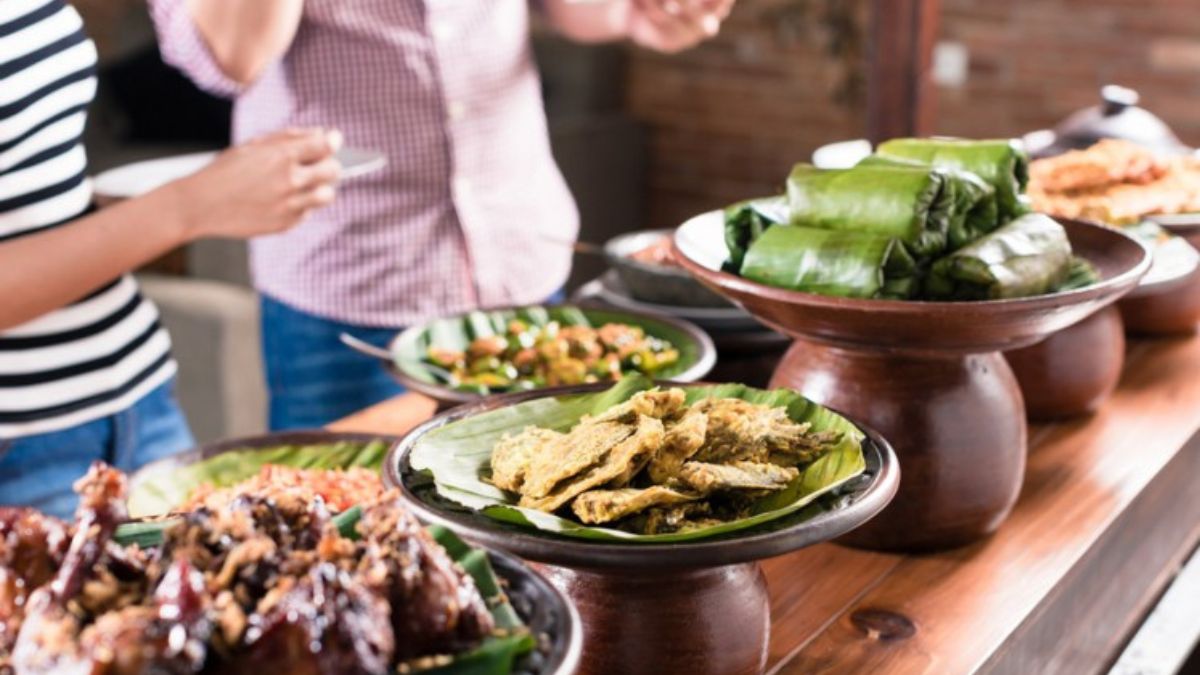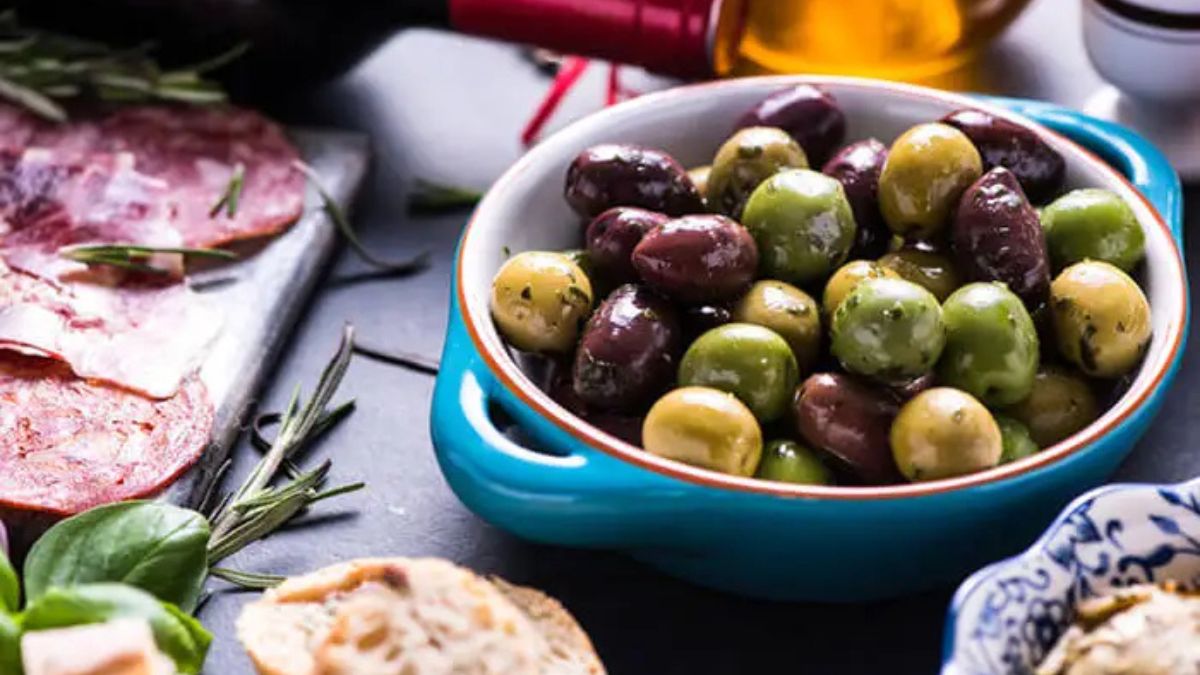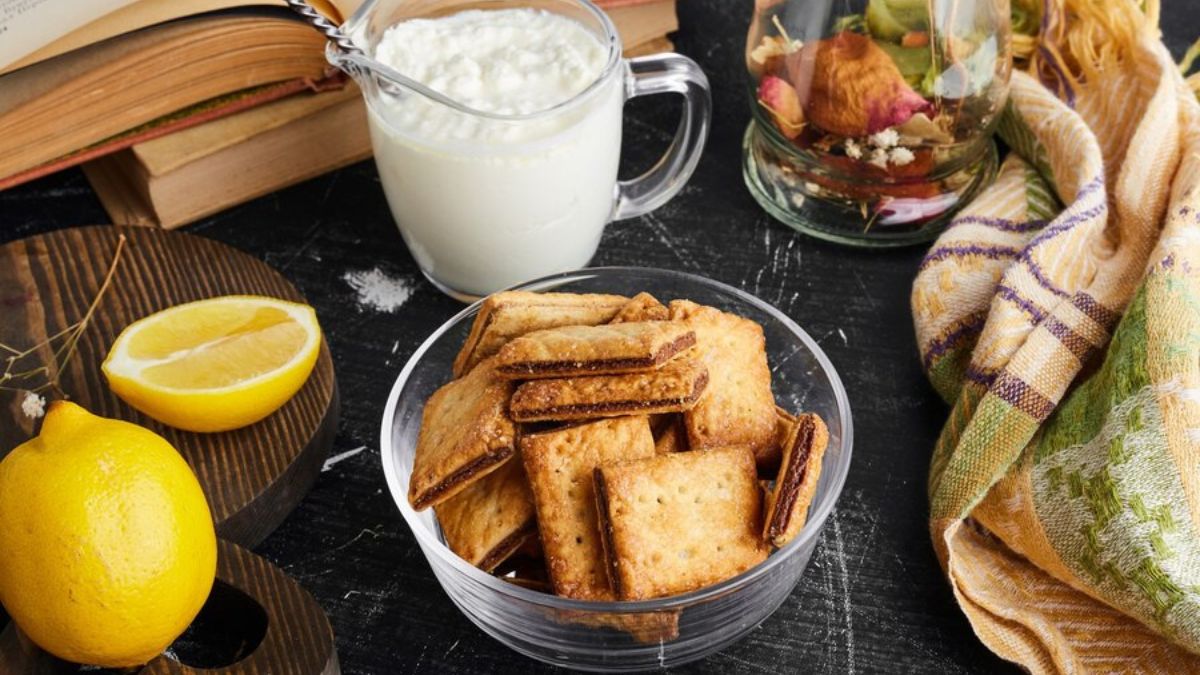FOOD
How to Make White Food Coloring at Home? DIY 2025 Guide

Creating your own white food coloring at home can be a rewarding and cost-effective solution, especially when you can’t find it in stores or need a quick alternative. White food dye is a versatile ingredient used to enhance the brightness of baked goods, create intricate cake designs, or correct the tone of icing and fondant. In this DIY guide, we’ll walk you through easy methods to make white color enhancer right in your kitchen.
Why Use White Food Coloring?
White food coloring is essential for several reasons. It can be used to:
- Brighten the colors of baked goods and confections.
- Achieve a perfect white finish on cakes and pastries.
- Correct the tone of colored icings and fondants.
Whether you’re a professional baker or a home enthusiast, having white food coloring in your pantry can elevate your culinary creations.

Ingredients and Tools You’ll Need
Before we dive into the methods, let’s gather the necessary ingredients and tools:
- Titanium Dioxide Powder: A common food-grade additive that provides a white pigment.
- Glycerin: A clear, sweet liquid used in baking and food coloring.
- Cornstarch: To thicken and stabilize the mixture.
- Water: Used as a base for your coloring.
- Mixing Bowls: For combining ingredients.
- Whisk or Spoon: For stirring your mixture.
Method 1: Making White Gel Food Coloring
White gel food coloring is ideal for decorating purposes. Here’s a simple method to create it:
Step-by-Step Instructions
- Mix Titanium Dioxide and Water: Start by combining one teaspoon of titanium dioxide powder with two tablespoons of water in a small mixing bowl. Stir until the powder is fully dissolved.
- Add Glycerin: Introduce two teaspoons of glycerin to the mixture. This will give your coloring a gel-like consistency, making it easier to use for decorating.
- Thicken with Cornstarch: Gradually add one teaspoon of cornstarch, stirring continuously to avoid lumps. This will help stabilize and thicken the gel.
- Adjust Consistency: If the mixture is too thick, add a few drops of water. If it’s too thin, add a pinch more cornstarch.
- Store Properly: Transfer your white gel food coloring into an airtight container. It can be stored in the refrigerator for up to two weeks.

Method 2: Liquid White Food Coloring
Liquid white food coloring is perfect for mixing into batters and doughs. Here’s how to make it:
Step-by-Step Instructions
- Dissolve Titanium Dioxide: In a small bowl, combine one teaspoon of titanium dioxide powder with three tablespoons of water. Stir until fully dissolved.
- Add More Water: Depending on the desired consistency, you may add up to one more tablespoon of water.
- Mix Thoroughly: Ensure there are no lumps or undissolved particles in your mixture.
- Bottle and Store: Pour the liquid into a squeeze bottle for easy use. Store it in a cool, dry place for up to a month.
Tips for Using Homemade White Food Coloring
Here are some tips to get the best results with your homemade white food coloring:
- Test First: Always test your coloring on a small portion of the product before applying it to the entire batch.
- Shake Well: Before each use, shake your bottle to ensure the ingredients are well combined.
- Adjust as Needed: If your baked goods aren’t achieving the desired brightness, add a few more drops of coloring.
Safety Considerations
When making and using homemade food coloring, keep these safety tips in mind:
- Use Food-Grade Ingredients: Ensure all ingredients, especially titanium dioxide, are labeled food-grade.
- Avoid Inhalation: Be careful not to inhale the powder when mixing.
Alternatives to Homemade White Food Coloring
If you prefer not to make white food coloring at home, there are alternatives available:
- Commercial White Food Coloring: Available in most baking supply stores and online.
- Natural Ingredients: Some bakers use coconut milk or powdered sugar to achieve a white hue in their creations.
Making white food coloring at home is a straightforward and rewarding process. With just a few ingredients, you can create both gel and liquid versions to suit your baking needs. Whether enhancing the brightness of your cakes or achieving the perfect icing tone, homemade white food coloring is a handy tool in any baker’s arsenal. Enjoy your culinary adventures!
FOOD
A Culinary Journey Through Xuebaotou: Tastes and Traditions

Introduction to Xuebaotou and its Culinary Culture
Nestled in the heart of Inner Mongolia, Xuebaotou is a hidden gem waiting to be discovered. This vibrant city isn’t just known for its stunning landscapes and rich history; it also boasts a culinary scene that reflects its unique cultural tapestry. The flavors of Xuebaotou tell stories passed down through generations, showcasing local ingredients and traditional cooking techniques. Whether you’re an adventurous foodie or simply curious about regional cuisines, this culinary journey promises to tantalize your taste buds while immersing you in age-old traditions. Let’s explore what makes the food culture of Xuebaotou so special!
The Local Ingredients and their Significance
Xuebaotou boasts a rich tapestry of local ingredients that define its culinary landscape. The region’s climate and fertile soil create an ideal environment for diverse produce, particularly grains and vegetables.
Noodles made from locally sourced wheat are a staple here. They form the base of numerous dishes, capturing the essence of Xuebaotou’s tradition.
Vegetables like carrots and potatoes flourish in the area, adding vibrant colors and fresh flavors to meals. These ingredients aren’t just food; they represent seasonal rhythms and local agricultural practices.
The significance extends beyond taste. Using regional ingredients fosters community connections between farmers and chefs. It encourages sustainability while preserving cultural heritage.
Spices play their part too—local blends infuse dishes with unique flavor profiles, showcasing traditional knowledge passed down through generations. Each bite tells a story rooted in the land itself, making every meal a delicious tribute to Xuebaotou’s culinary identity.
Traditional Dishes of Xuebaotou
Xuebaotou is home to an array of traditional dishes that reflect its rich cultural heritage. One standout favorite is the local lamb hotpot, simmered with fragrant spices and fresh vegetables. This dish symbolizes warmth and togetherness, often enjoyed during family gatherings.
Another must-try is the famous Xuebaotou noodles. Hand-pulled and served in a savory broth, they are both comforting and flavorful. Locals often share stories over bowls of these delicious noodles.
Don’t miss out on their dumplings either. Filled with seasonal ingredients, each bite bursts with flavor, showcasing culinary techniques passed down through generations.
Street vendors also offer unique snacks like fried pastries filled with sweet bean paste—perfect for a quick taste on the go! Explore these flavors that tell tales of tradition while indulging your palate in this vibrant city’s culinary landscape.
Fusion Cuisine and Modern Influences in Xuebaotou
Xuebaotou is a melting pot of flavors, where traditional dishes meet modern culinary trends. Chefs are experimenting with local ingredients while infusing global techniques and tastes. This innovative approach breathes new life into age-old recipes.
One popular trend is the incorporation of Western elements into classic Xuebaotou fare. Imagine savory dumplings filled with gourmet cheeses or noodles topped with herbs from distant lands. These fusion creations attract both locals and tourists alike.
Street food stalls also reflect this shift. A vendor may serve spicy lamb skewers drizzled in a zesty sauce inspired by Mediterranean cuisine, creating an unforgettable bite that bridges cultures.
The vibrant culinary scene here showcases how tradition can evolve without losing its roots. Each dish tells a story, capturing the essence of Xuebaotou while embracing the world beyond its borders.
Must-Try Restaurants and Street Food
Xuebaotou is a culinary paradise waiting to be explored. Street food stalls fill the bustling streets, each offering mouthwatering delights that reflect local flavors.
Don’t miss out on the crispy fried dough sticks known as “you tiao.” They pair perfectly with warm soy milk for breakfast. Meanwhile, grilled lamb skewers provide a smoky taste of tradition.
For a sit-down experience, head to Jinlong Restaurant. Their signature dish, braised pork belly with rich sauces and spices, is simply unforgettable.
Another gem is the small eatery called Huasheng Xiaochi. Here you’ll find handmade dumplings bursting with fresh ingredients – an absolute must-try.
Every corner of Xuebaotou has something special to offer. Whether it’s exploring quirky cafes or indulging in hearty meals from street vendors, your palate will thank you for this adventure.
Cultural Traditions Surrounding Food in Xuebaotou
Food in Xuebaotou is deeply rooted in cultural traditions. Each dish tells a story, reflecting the region’s history and values.
Festivals are particularly vibrant. They often feature communal meals where families gather to share dishes that have been passed down through generations. These gatherings strengthen bonds and create lasting memories.
Seasonal ingredients play an essential role too. Locals celebrate harvests with special recipes that highlight the freshest produce. There’s a sense of reverence for these gifts from nature.
Rituals surrounding food preparation are equally important. Many families still practice age-old techniques, ensuring authenticity in every bite.
Moreover, hospitality is paramount in Xuebaotou culture. Guests are treated with utmost respect and offered an abundance of food as a symbol of warmth and friendship.
These culinary customs not only nourish but also unite people, making every meal an event filled with meaning and joy.
Conclusion: Why a Culinary Journey Through Xuebaotou is a Must-Do Experience
A culinary journey through Xuebaotou offers a rich tapestry of flavors and experiences that reflect the region’s vibrant culture. The local ingredients, sourced from both land and water, tell stories of tradition and heritage. When you savor traditional dishes like lamb hotpot or hand-pulled noodles, you’re not just tasting food; you’re experiencing generations of craftsmanship.
The fusion cuisine emerging in Xuebaotou showcases an exciting blend of regional influences, making each meal unique. From bustling street vendors to upscale restaurants, there’s something for every palate. Each bite is an invitation to explore deeper into this fascinating locale.
Food in Xuebaotou isn’t merely about sustenance; it’s intertwined with cultural practices and celebrations that bring people together. Whether it’s sharing meals during festivals or enjoying family gatherings around a hotpot, the communal aspect enhances the dining experience here.
Embarking on this culinary adventure allows visitors to connect with locals while indulging in remarkable tastes that define the essence of Xuebaotou. It truly represents a feast for all senses—sight, smell, taste—and connects travelers to its heart and soul through food. This exploration promises unforgettable memories long after your plates are cleared away.
FOOD
The Art of Pairing: Best Wines to Enjoy with Prosecchini Dishes

Introduction to Prosecchini dishes
Prosecchini dishes are a delightful fusion of flavors, often highlighting the best ingredients from Italy. These culinary masterpieces offer a symphony of tastes that range from savory to sweet — making them perfect for any occasion. Whether it’s a casual dinner or an elegant gathering, the right wine can elevate these dishes to new heights.
But how do you select the ideal bottle? The art of pairing is all about balance and harmony. With so many wines available, finding one that enhances your Prosecchini meal can be both exciting and daunting. Let’s embark on this flavorful journey together as we explore how to perfectly match wines with Prosecchini dishes!
Factors to consider when pairing wine with Prosecchini dishes
When pairing wine with Prosecchini dishes, the primary factor is flavor. Consider whether the dish leans towards savory or spicy notes. A balanced approach can elevate both elements.
Next, think about texture. Creamy sauces may call for a fuller-bodied wine, while lighter preparations benefit from something crisp and refreshing.
Temperature plays a role too. Serving temperatures impact aroma and taste perception. Ensure your wine is served at its ideal temperature to enhance the dining experience.
Additionally, consider acidity levels in both food and wine. High-acid wines can cut through rich flavors, making them an excellent match for heavy dishes.
Don’t forget personal preference! Wine enjoyment should resonate with individual tastes; experiment until you find that perfect harmony between your chosen Prosecchini dish and wine selection.
Types of wines that pair well with Prosecchini dishes
When it comes to pairing wines with Prosecchini dishes, the options are diverse and exciting. White wines often take the spotlight. A crisp Pinot Grigio complements light pasta or seafood variations beautifully.
For those hearty Prosecchini dishes featuring rich sauces, consider a medium-bodied red like Chianti. Its bright acidity cuts through the richness of creamy ingredients, creating a balanced experience.
Another fantastic option is Sauvignon Blanc. This wine’s zesty citrus notes enhance fresh vegetable flavors found in many Prosecchini recipes.
If you’re venturing into spicier territory, a Grenache can provide an unexpected yet delightful contrast without overwhelming your palate.
Don’t overlook sparkling wines such as Prosecco itself! The effervescence adds a fun twist while harmonizing with various textures and tastes inherent in these delectable dishes.
The impact of aging, tannins, and acidity in wine pairing
Aging, tannins, and acidity are crucial elements that influence wine pairing with prosecchini dishes. Aged wines often develop complex flavors. These nuanced profiles can beautifully complement the savory notes found in many prosecchini recipes.
Tannins play a significant role as well. They add structure to red wines and can enhance the richness of meat-based prosecchini dishes. When paired correctly, tannic wines balance out the dish’s flavors without overpowering them.
Acidity is another vital factor to consider. High-acid wines can cut through creaminess or fat in certain prosecchini meals, providing a refreshing contrast. This interaction enhances both the wine and food experience.
Understanding these components allows for more informed choices when selecting a wine to accompany your favorite prosecchini creations. Each sip should elevate your dining experience, creating harmony between each element on your plate and in your glass.
Popular Prosecchini dishes and their ideal wine pairings
Prosecchini dishes offer a delightful array of flavors that can enhance any dining experience. Take the classic Prosecchini alla Griglia, featuring grilled vegetables drizzled with olive oil and herbs. A crisp Pinot Grigio complements this dish beautifully, highlighting its fresh ingredients.
For something more robust, consider Prosecchini al Pomodoro—a savory tomato-based pasta. A medium-bodied Chianti provides a perfect balance to the acidity of the tomatoes while boosting the overall flavor profile.
If you’re indulging in a rich Prosecchini Risotto, opt for an oaked Chardonnay. The wine’s creamy texture harmonizes with the risotto’s richness and enhances each bite.
When serving fried Prosecchini snacks like Arancini, sparkling wines like Prosecco add a refreshing contrast. Its effervescence cuts through the grease while accentuating those irresistible flavors. Each pairing elevates your meal into an unforgettable culinary journey.
Tips for creating a perfect wine and food pairing experience
Creating the perfect wine and food pairing can elevate your dining experience. Start by considering the flavor profile of both the dish and the wine. Think about whether you want to complement or contrast flavors.
Temperature matters too. Serve whites chilled and reds at room temperature for optimal taste. This simple factor can enhance aromas and textures significantly.
Don’t forget about texture. A creamy sauce may call for a wine with good acidity, while heartier dishes might pair better with something full-bodied.
Experimentation is key; trust your palate! Don’t hesitate to try unconventional pairings that intrigue you.
Enjoy the process with friends or family. Sharing thoughts on various combinations adds depth to your tasting journey, making it memorable as well as delicious.
Conclusion
Pairing wine with Prosecchini dishes can elevate your dining experience to new heights. By understanding the nuances of flavor, acidity, and texture in both the food and the wine, you can create harmonious combinations that delight the palate. Remember to consider factors like dish preparation and personal preferences when making your selections.
Exploring various wines—from crisp whites to full-bodied reds—opens up a world of possibilities. Each Prosecchini dish offers unique characteristics that can be complemented by thoughtful pairings. Whether you’re enjoying a simple pasta or an elaborate seafood creation, there’s a perfect bottle waiting for you.
As you embark on this culinary journey, keep experimenting with different wines and flavors. The joy of discovering what works best for your taste is part of the art itself. Let each meal inspire another pairing adventure as you continue to refine your skills in matching exquisite Prosecchini cuisine with exceptional wines. Cheers!
FOOD
Toastul: The Ultimate Breakfast Companion

Breakfast is more than just a meal—it’s an opportunity to ignite your day with energy and enthusiasm. Enter Toastul, the breakfast companion you didn’t know you needed. Whether you’re a busy professional, a student on the go, or someone who simply enjoys beginning the day with a culinary adventure, Toastul is here to redefine your mornings. Join us as we explore the marvel that is Toastul, discover its unique features, and learn how it can transform your breakfast routine.
Why Toastul Captivates Morning Enthusiasts
Imagine waking up to a device that turns your morning toast into a masterpiece. Toastul isn’t just a toaster; it’s a revolutionary breakfast companion designed to inspire creativity and elevate the most mundane meal of the day. With its sleek design and innovative technology, Toastul offers a fresh perspective on what breakfast can be, catering to those who seek convenience without sacrificing quality.
Many breakfast enthusiasts are drawn to Toastul because it brings a sense of excitement and novelty to their morning routine. The anticipation of trying something new and delightful each day makes breakfast a moment to look forward to rather than a rushed affair. By continuously innovating and adapting to modern tastes, Toastul has become an indispensable tool for those who take their breakfast seriously.
The allure of Toastul lies in its ability to turn an ordinary slice of bread into a canvas for culinary experimentation. From perfectly toasted slices to gourmet toppings, Toastul encourages users to explore new flavors and textures, making breakfast time both enjoyable and nourishing. This transformation of a simple meal into an art form is what makes Toastul truly captivating for morning enthusiasts.
The Evolution of Breakfast Appliances
Over the years, breakfast appliances have evolved dramatically to cater to our fast-paced lifestyles and diverse culinary preferences. While traditional toasters have served their purpose, they often lacked versatility and innovation. Enter Toastul, a game-changer in the world of breakfast technology that combines cutting-edge features with user-friendly design.
Toastul represents a significant leap forward from conventional appliances, integrating advanced technology to offer customizable toasting options and gourmet topping suggestions. With its intuitive interface and smart settings, Toastul ensures that every slice is precisely toasted to perfection, eliminating the guesswork and delivering consistent results.
The evolution of breakfast appliances has been driven by the desire to enhance convenience and efficiency in our daily lives. Toastul embodies this progress by offering a seamless blend of style and functionality, making it an essential addition to any modern kitchen. Its ability to adapt to individual preferences and dietary needs ensures that everyone can enjoy a personalized breakfast experience.
Toastul’s Revolutionary Features
Toastul is packed with innovative features that set it apart from traditional toasters. One of its most notable attributes is the customizable toasting settings, allowing users to adjust the browning level for each slice according to their preference. Whether you prefer a light golden hue or a rich, dark crunch, Toastul delivers the perfect toast every time.
Another standout feature is the inclusion of a built-in recipe book, offering a plethora of gourmet topping ideas for users to try. From savory avocado spreads to sweet berry compotes, Toastul inspires creativity and encourages users to experiment with different flavor combinations. This feature transforms breakfast into a delightful culinary adventure.
Additionally, Toastul’s sleek design and compact size make it a stylish addition to any kitchen. Its intuitive interface ensures ease of use, while its energy-efficient design promotes sustainability. By combining practicality with aesthetics, Toastul proves that a breakfast appliance can be both functional and visually appealing.
How Toastul Enhances Your Morning Routine
For many, mornings can be a hectic time filled with hurried preparations and last-minute tasks. Toastul aims to change that by offering a streamlined breakfast solution that saves time without compromising on quality. With its quick toasting capabilities and easy-to-use features, Toastul simplifies the breakfast process, leaving you more time to focus on other important aspects of your day.
In addition to saving time, Toastul enhances the morning routine by encouraging mindfulness and creativity during breakfast. By exploring new toppings and flavor combinations, users can enjoy a more engaging and fulfilling breakfast experience. This mindful approach to eating can set a positive tone for the rest of the day, promoting overall well-being.
Furthermore, Toastul’s versatility allows it to accommodate a variety of dietary preferences and restrictions. Whether you’re gluten-free, vegan, or simply looking to incorporate more nutritious options into your diet, Toastul has you covered. Its adaptability ensures that everyone can enjoy a satisfying and delicious start to their day.
The Art of Perfect Toasting
Achieving the perfect toast is an art form that Toastul has mastered with precision and finesse. With its advanced toasting technology, Toastul ensures that each slice is evenly browned and crisped to perfection. This attention to detail elevates the simple act of toasting into a culinary delight, enhancing the flavor and texture of every slice.
Toasting with Toastul also involves exploring a range of gourmet toppings and spreads, each carefully curated to complement the toasted bread. This creative approach transforms breakfast into an opportunity to indulge in new flavors and textures, allowing users to express their culinary artistry.
The art of perfect toasting extends beyond just bread; Toastul’s versatility allows it to handle a variety of baked goods, from bagels and rolls to artisanal bread and pastries. This flexibility ensures that users can enjoy a diverse range of breakfast options, each prepared to the highest standard of quality.
Exploring Gourmet Toppings with Toastul
One of the most exciting aspects of using Toastul is the opportunity to experiment with gourmet toppings and spreads. With its built-in recipe book, Toastul offers an array of delicious ideas to elevate your breakfast experience. From classic butter and jam to inventive avocado and feta combinations, the possibilities are endless.
Exploring gourmet toppings not only adds variety to your breakfast but also introduces new flavors and textures that can invigorate your palate. By trying out different combinations, users can discover their personal favorites and create a breakfast experience that is uniquely their own.
Toastul’s emphasis on gourmet toppings also encourages users to incorporate healthier ingredients into their meals. By exploring options like nut butters, fresh fruits, and wholesome grains, users can enjoy a nutritious and balanced breakfast that supports their overall well-being.
The Convenience Factor of Toastul
In our fast-paced world, convenience is a key priority for many individuals. Toastul addresses this need by offering a breakfast solution that is both quick and efficient. With its rapid toasting capabilities and user-friendly design, Toastul streamlines the breakfast process, allowing users to enjoy a delicious meal in a matter of minutes.
Toastul’s compact size and sleek design make it an ideal choice for those with limited kitchen space. Its intuitive interface ensures that even novice users can easily operate the appliance, making it accessible to a wide range of individuals. This focus on convenience and usability is at the heart of Toastul’s appeal.
Beyond its practical features, Toastul also offers the convenience of adaptability, accommodating a variety of dietary preferences and restrictions. Whether you’re preparing a quick on-the-go breakfast or indulging in a leisurely weekend brunch, Toastul provides the flexibility to suit your needs.
Sustainable Breakfast Practices with Toastul
In today’s environmentally conscious society, sustainable practices are more important than ever. Toastul aligns with this ethos by promoting eco-friendly habits and reducing waste in the kitchen. Its energy-efficient design minimizes electricity consumption, making it a responsible choice for environmentally conscious consumers.
Incorporating sustainable practices into your breakfast routine can also involve choosing locally sourced and organic ingredients for your gourmet toppings. By supporting local farmers and producers, you contribute to a more sustainable food system and enjoy fresher, higher-quality ingredients.
Toastul’s emphasis on sustainability extends to its durable construction and long-lasting performance. By investing in a high-quality appliance that stands the test of time, users can reduce the need for frequent replacements, ultimately decreasing their environmental footprint.
Building a Community Around Breakfast
Breakfast is more than just a meal; it’s an opportunity to connect with others and share experiences. Toastul fosters a sense of community among its users by encouraging them to explore new recipes, share their creations, and engage with fellow breakfast enthusiasts.
By participating in the Toastul community, users can exchange ideas, tips, and inspiration, creating a supportive environment where everyone can thrive. This sense of camaraderie enhances the overall breakfast experience, making it more enjoyable and fulfilling.
In addition to fostering connections among users, Toastul also collaborates with local chefs and food influencers to curate exclusive recipes and events. These collaborations provide users with access to expert insights and innovative ideas, further enriching their breakfast journeys.
Toastul and the Modern Breakfast Revolution
The modern breakfast revolution is characterized by a shift towards healthier, more mindful eating habits, and Toastul is at the forefront of this movement. By promoting creativity, efficiency, and sustainability, Toastul reimagines what breakfast can be, offering a fresh perspective on the most important meal of the day.
As more individuals prioritize nutrition and well-being, the demand for innovative breakfast solutions continues to grow. Toastul meets this demand by providing a versatile and adaptable appliance that caters to a wide range of tastes and preferences, making it an essential tool for the modern eater.
The influence of Toastul in the breakfast revolution extends beyond individual households, as its commitment to quality and sustainability inspires positive change within the broader food industry. By championing responsible practices and innovative technology, Toastul sets a new standard for breakfast appliances.
Conclusion Rediscover the Joy of Breakfast with Toastul
In a world where mornings are often rushed and chaotic, Toastul offers a refreshing approach to breakfast, transforming it into a moment of creativity and enjoyment. With its versatile features, gourmet topping options, and commitment to sustainability, Toastul is more than just a kitchen appliance—it’s a catalyst for a better breakfast experience.
For those seeking to elevate their morning routine and explore new culinary adventures, Toastul is the ultimate breakfast companion. Its ability to adapt to individual preferences and support a wide range of dietary needs ensures that everyone can enjoy a personalized and satisfying start to their day.
Ready to revolutionize your breakfast experience? Discover the endless possibilities with Toastul and join the community of breakfast enthusiasts who have embraced this innovative appliance. Your perfect morning awaits!
-

 TECHNOLOGY6 days ago
TECHNOLOGY6 days agoTop 10 Must-Read Stories from Kristen Archives You Can’t Miss
-

 TECHNOLOGY6 months ago
TECHNOLOGY6 months agoSky Bri Net Worth Revealed: How She Built Her Financial Empire
-

 TOPIC8 months ago
TOPIC8 months agoBasement Renovation Contractors: How They Tackle Structural Issues During Renovations
-

 TOPIC3 months ago
TOPIC3 months ago5 Reasons the //Vital-Mag.Net Blog Dominates Lifestyle
-

 TOPIC1 month ago
TOPIC1 month agoTop 10 Articles from the ://Vital-Mag.net Blog That You Can’t Miss
-

 CRYPTO4 months ago
CRYPTO4 months agoCrypto30x.com Review: Is It the Right Platform for You?
-

 BUSINESS1 week ago
BUSINESS1 week agoTraceLoans Explained What You Need to Know
-

 BUSINESS3 weeks ago
BUSINESS3 weeks agoDecoding the Kennedy Funding Ripoff Report: Facts vs. Fiction
